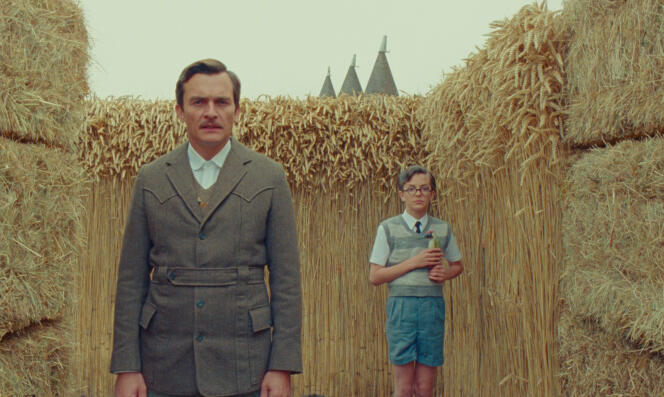Now available in full on Netflix, four short formats by Wes Anderson, taken from the short stories of the British writer Roald Dahl (1916-1990), reveal themselves to be more than a simple recreation, or even a side step, on the part of the Texan dandy. Put end to end, they form a coherent whole, the duration of which is close to that of a feature film. In their capacity as abstracts, they function like so many small fiction laboratories. Each one opens, in their own way, the hood on the filmmaker’s factory, showing how his modeling style, often caricatured in terms of “doll’s house”, is much more like a theater of trestles and machines.
Introduced each time by Ralph Fiennes in the shoes of the writer, immersed in his work chair, Charentaises on his feet and pencil in his hand, the anthology is presented as follows. The longest part, The Wonderful Story of Henry Sugarunfolds a tale of drawers, where a rich idler develops a method for seeing closed eyelids after his discovery of a dark pamphlet, a biography of an Indian circus phenomenon having himself acquired it from a yogi in the forest.
Inspired by a country news item, The Swan describes the ordeal of a child ornithophile being bullied by two imbecile hunters. The Rat Catcher sketches a rodent controller who identifies perfectly with the rodents he exterminates. Finally, Venom, behind closed doors, shows a man immobilized on his bed by a bongar snake slipped under his pajama jacket. All performed by one of these five-star troupes that the filmmaker is accustomed to, including Benedict Cumberbatch, Ben Kingsley, Rupert Friend, Richard Ayoade and Dev Patel.
Handmade illusionism
The strength of these stories lies first of all in their extraordinary condensation. Anderson establishes a unique point of view, similar to that of a theater stage. From there, the action moves at full speed with sliding sets, painted canvases, pantomimes, puppets, visible artifices – all the resources, in short, of artisanal illusionism. The constraint may seem rigid, but above all it causes rich visual discoveries: a body subjected to X-rays whose throbbing insides are revealed; a corner of the countryside dug like a trench in a haystack; a rat animated in stop motion; a miniature train suggesting the distant horizon; a piece of jungle out of a painting by Douanier Rousseau, and a host of other things. The aesthetics of the boards allow all the dimensions of space to be crushed in the same plane: the near and the far, the top and the bottom, the field and the reverse field.
You have 38.02% of this article left to read. The rest is reserved for subscribers.
